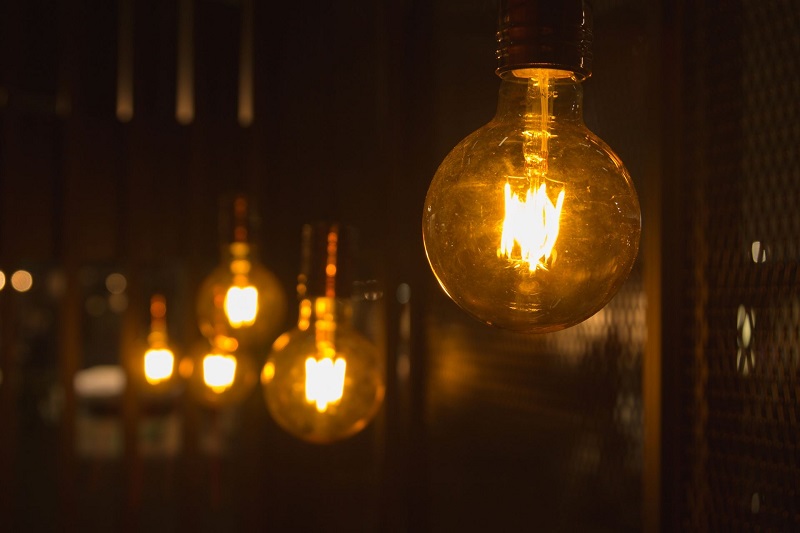
Knowing the types of light bulbs that exist today is very useful for your pocket and for the environment. Knowing its characteristics, you will be able to choose judiciously which ones best suit your needs. In addition, it will allow you to save on electricity consumption, having a positive impact on the family economy, and you will be able to contribute to protecting the environment with light bulbs that pollute less.
In most homes, lighting energy consumption reaches 18%, while in offices and businesses, the figure shoots up to close to 30%. Taking into account the energy dependence of today’s society, it is important to know the varieties of light bulbs to optimize their consumption to the maximum. To discover the different types of light bulbs and their characteristics, we recommend that you continue reading this article.
Incandescent bulbs
Incandescent bulbs are the most traditional. They produce light by heating a filament. They are light bulbs that waste a lot of heat and, therefore, are the least efficient on the market in relation to consumption and brightness.
Another drawback of this type of bulb is that they have a very short lifespan: they rarely exceed 2,000 hours of lighting. Due to their high consumption and the poor energy efficiency they offer, in recent years better bulbs have been developed in both directions.
Halogen and eco-halogen bulbs
Halogen bulbs are very similar to incandescents. Its operating mechanism is the same but with a big difference: the halogen lamps incorporate this gas inside, an element that makes them more energy efficient.
However, despite being more efficient than incandescent bulbs, its most important factor must be highlighted: the European Union banned their use on September 1, 2018, so lamps with halogen bulbs are no longer a light alternative.
Fluorescent bulbs
These types of light bulbs are based on efficient technology, consisting of combining gases and salts that emit light when they come into contact with an electric current. The consumption of fluorescent bulbs can be up to 80% less than that of incandescent lamps, that is, they have a very good luminous efficiency.
Regarding the useful life of fluorescent bulbs, they have a duration that can range between 5,000 and 7,000 hours. On the other hand, they have some disadvantages such as the price, since their cost is somewhat higher than other less efficient bulbs. In addition, the ignition time of fluorescent bulbs is not instantaneous and both the sockets and their installation require special sockets.
Fluorescent bulbs
They are light bulbs that use a technology similar to fluorescent tubes , but with the difference that the fluocompact ones have caps similar to other light bulbs, and can be placed in small spaces.
LED bulbs
Despite their high price compared to the competition, LED lights are currently the most interesting alternative in the light bulb market . Its consumption in relation to the lumens it generates are low, they can be controlled with different devices, they have an enormous duration of up to 50,000 hours and they do not emit any heat.
Therefore, they are the most attractive option for long-term lighting both for their energy efficiency and their low impact on the environment.
Types of bulbs and their characteristics
After helping you discover the different types of light bulbs that exist, we give you the following recommendations so that you can choose the one that best suits your needs:
- Know the consumption of the bulb by looking at the watt figure, marked with W. You should also look at the energy label: being A ++, it will be more efficient than an A + .
- To find out how bright a light bulb is, look at the lumens (lm). The more you have, the greater your ability to illuminate.
- Look at the number indicated on the bulb with the letter K ( Kelvin degrees ). This value indicates the color temperature: the lower it is, the warmer the light will be. Warm light is between 2,700 and 3,500 K, ideal for creating cozy environments and commonly used in bedrooms, halls and living rooms; neutral light is 3,500 to 4,500 K and is recommended for bathrooms and kitchens; a cold light, from 4,500 K to 6,500 K, is used in offices and, compared to homes, it is usually relegated to storage rooms and garages.
- According to the hours that you light a light bulb daily, you can calculate its duration of years. For example, LED bulbs with a durability of 10,000 hours, remaining on for 3 hours a day, can reach a useful life of 10 years.
- Cap type: the vast majority of lamps require bulbs with a screw cap. It can be fine (E14) or thick (E27). For a track, recessed, and series spotlights, GU10 and GU 5.3 sockets are used. On the other hand, outdoor projectors and floor lamps usually have small, straight, and elongated bulbs, with an R7S socket.
- To have a light focused on a specific point, seeking to highlight a painting or any other element, you will be interested in a bulb with a closed opening angle, that is, about 40 0. On the contrary, if you want the light to have a better distribution, opt for a bulb with an opening angle of 360 0, perfect for illuminating large spaces.

